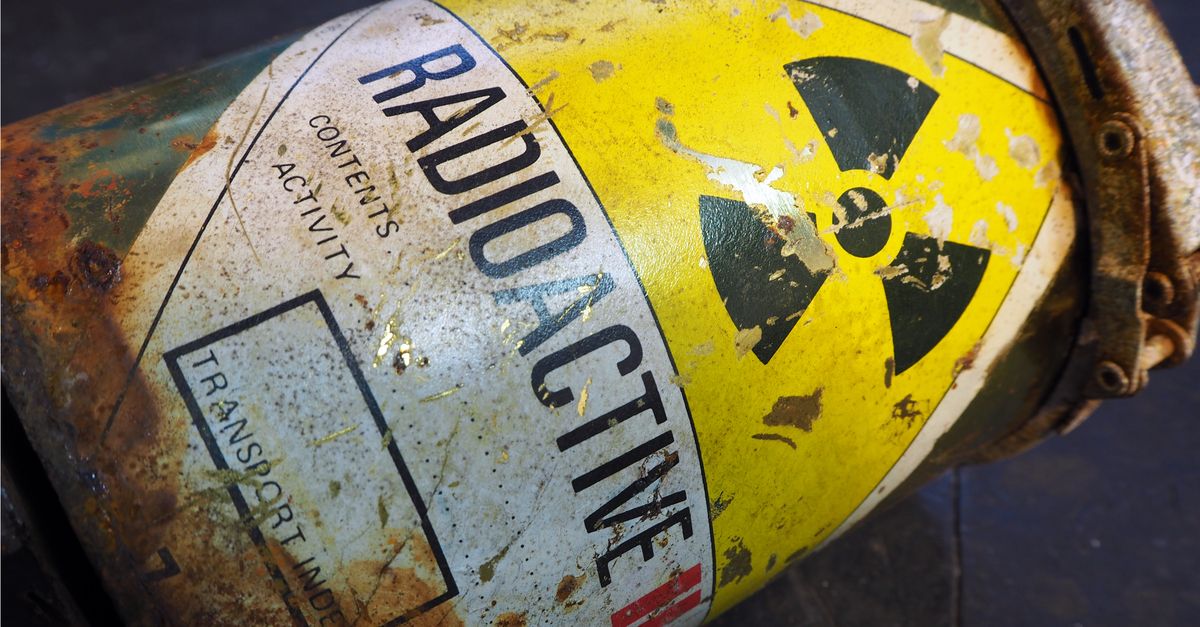The United States has more than 90,000 metric tons of nuclear waste that under existing law legally requires long-term disposal in expensive, geologically deep containment facilities. Around 80,000 metric tons of this waste is spent fuel from commercial nuclear power plants, and about 14,000 metric tons of the total nuclear waste comes from the U.S nuclear weapons program. As described by the nonpartisan Government Accountability Office (GAO), “This spent nuclear fuel, which can pose serious risks to humans and the environment, is enough to fill a football field about 20 meters deep.” Currently, however, the U.S. has no long-term disposal site for the “permanent isolation” of this material, and the amount of waste is expected to grow to 140,000 metric tons over the next several decades.
On 5 June 2019, the Trump administration announced a change in the interpretation of current regulations that would allow some of that waste to be disposed of under less stringent conditions. Here, we summarize the administration's proposed change and the reaction this proposal has received in scientific, political, and environmental circles.
The Problem
Until a long-term federal containment facility for what is termed “high-level radioactive waste” is built — an effort hampered by years of lawsuits and delays — this dangerous material must be stored either on-site at the power plants where the waste originated or at temporary containment locations. Both the Atomic Energy Act of 1954 and the Nuclear Waste Policy Act of 1982 define high-level radioactive waste as, in part, “the highly radioactive material resulting from the reprocessing of spent nuclear fuel.” Such a definition has historically meant that all spent nuclear fuel, as well as the materials used in the reprocessing of some of that waste material, require permanent isolation in a deep, as-yet unbuilt containment facility.
This requirement, in the view of Trump’s Department of Energy (DOE), is problematic because it hampers America’s ability to dispose of hazardous waste and increases the already exorbitant cost of nuclear-waste containment, as the DOE argued in a June 2019 press release:
For decades, DOE has managed nearly all reprocessing waste streams as [High-Level Waste] regardless of radioactivity. This one-size-fits-all approach has led to decades of delay, costs billions of dollars, and left the waste trapped in DOE facilities in the states of South Carolina, Washington, and Idaho without a permanent disposal solution.
The Trump Administration’s Solution
DOE’s recently announced solution, posted after a 120-day solicitation period for comments from the public, was to modify that office’s interpretation of “high-level radioactive waste” to exclude the portions of that waste meeting certain safety thresholds. Specifically, DOE interprets the current law to mean that some “waste may be determined to be non-HLW” if it meets specific thresholds for radioactivity or if it “does not require disposal in a deep geologic repository” and can instead be contained in a different structure. The change in interpretation would, the DOE stated, primarily affect stockpiles of nuclear waste at reprocessing facilities at the Hanford Site in Washington state, the Savannah River Site in South Carolina, and the Idaho National Laboratory in Idaho.
DOE’s notice of this new interpretation was sparse on additional specifics, however. “Decisions about whether and how this interpretation of HLW will apply to existing wastes and whether such wastes may be managed as non-HLW will be the subject of subsequent actions,” the DOE press release read.
Reactions
Gov. Jay Inslee of Washington, whose state holds 60 percent of the nation’s high-level waste, described the decision as “opening the door for the federal government to walk away from its obligation to clean up millions of gallons of toxic, radioactive waste at Hanford.” Inslee argued that “By taking this action, the administration seeks to cut out state input and move towards disposal options of their choosing, including those already deemed to be unsafe by their own assessments and in violation of the existing legally binding agreement. We will consider all options to stop this reckless and dangerous action.”
Rick Lee, chairman of the South Carolina Governor's Nuclear Advisory Council, however, was a bit more optimistic. Speaking to the Post and Courier, Lee said, “At first blush, it looks like reclassification would allow stuff to get out of the state more easily.”
The Natural Resources Defense Council (NRDC), along with many other environmental groups, vigorously opposed the reclassification of HLW. In a press release, Geoff Fettus, a senior attorney at NRDC, stated:
The Trump administration is moving to fundamentally alter more than 50 years of national consensus on how the most toxic and radioactive waste in the world is managed and ultimately disposed of. No matter what they call it, this waste needs a permanent, well-protected disposal option to guard it for generations to come. Pretending this waste is not dangerous is irresponsible and outrageous.
Scientifically, a common view is that this new interpretation is at best a quick fix for a problem that needs a much more comprehensive solution, and at worst a decision that increases the potential for harm. In 2012, the Obama administration created the Blue Ribbon Commission on America’s Nuclear Future “to conduct a comprehensive review of policies for managing the back end of the nuclear fuel cycle and recommend a new strategy.” That panel recommended that “a new, single-purpose organization is needed to provide the stability, focus, and credibility that are essential to get the waste program back on track,” arguing that “the overall record of DOE and of the federal government as a whole … has not inspired widespread confidence or trust in our nation’s nuclear waste management program.”
Such an organization has not yet taken shape. The DOE appears to be moving forward with a plan that does not involve changing a single written law. Instead, they have changed the interpretation of one crucial term — high-level nuclear waste — in existing law.
